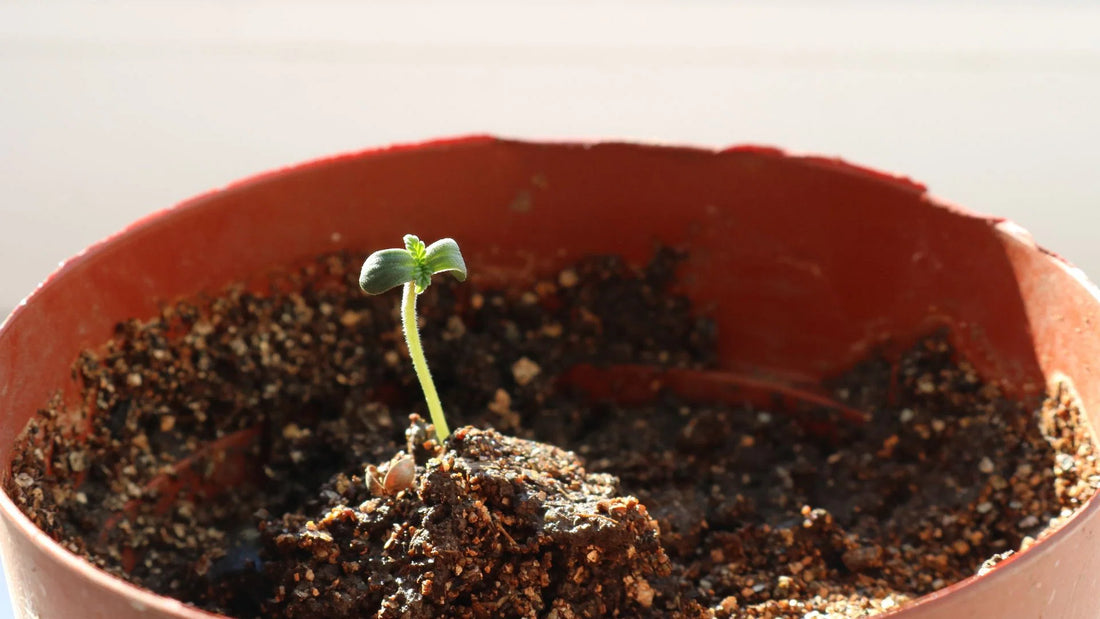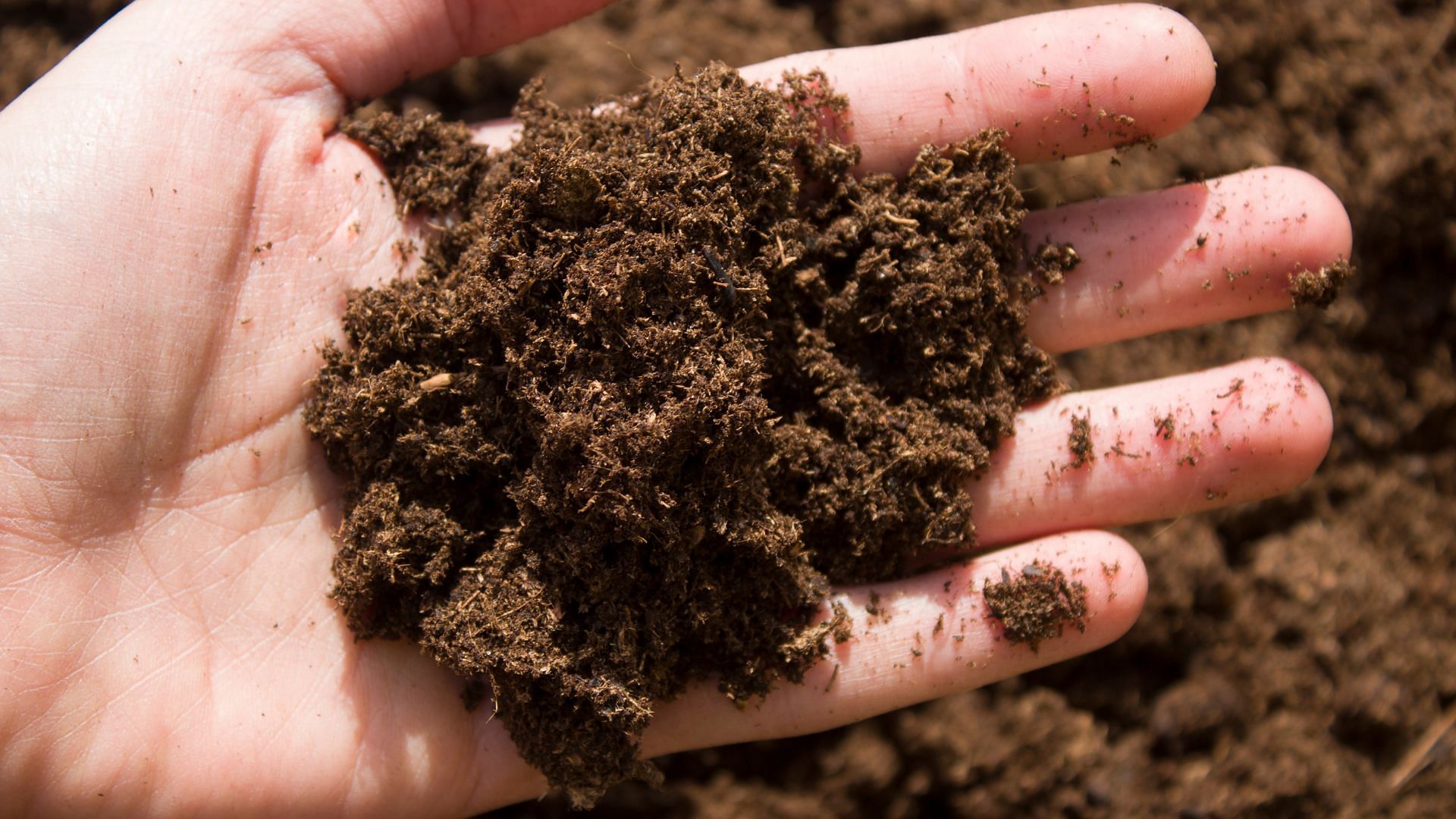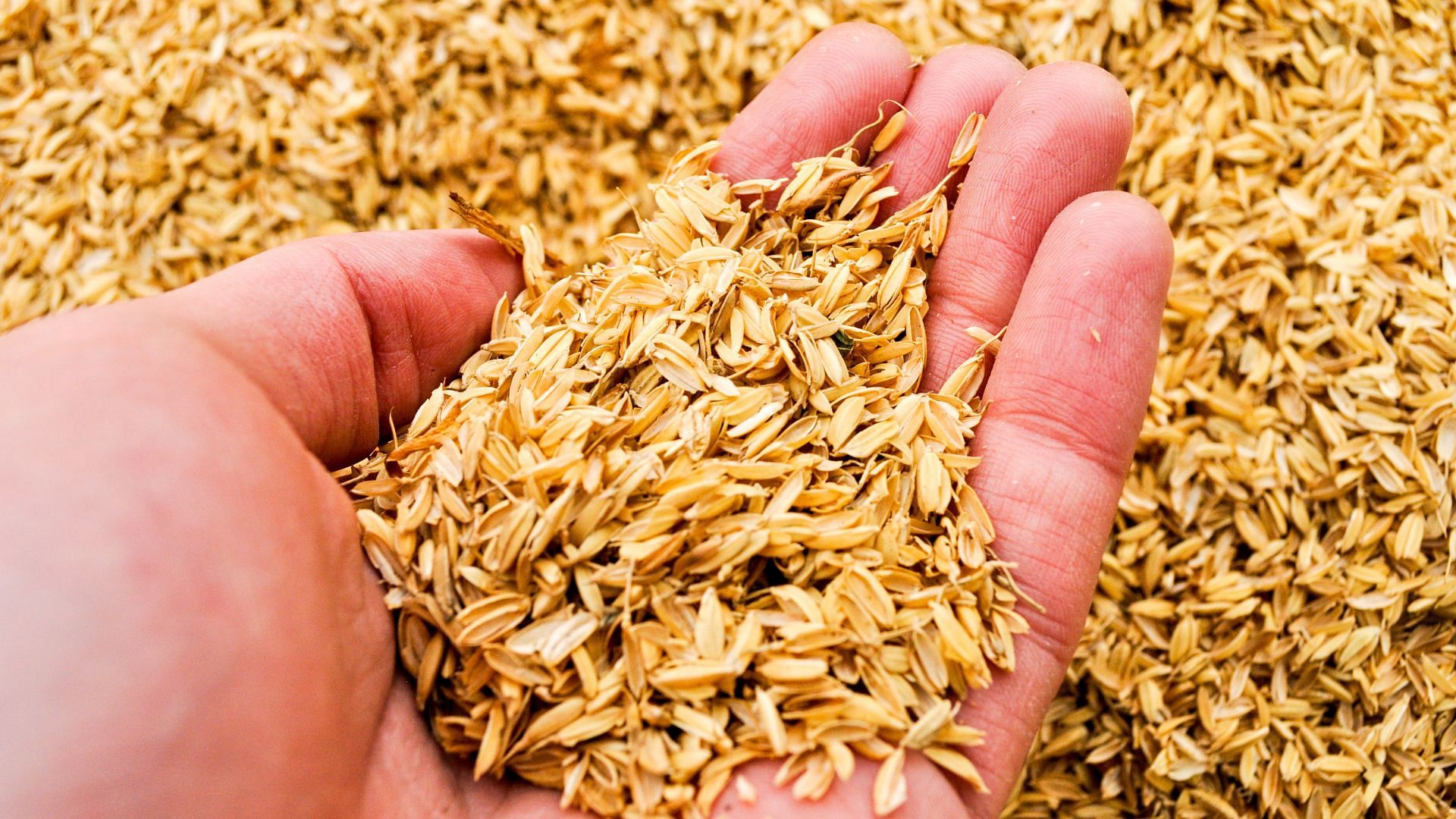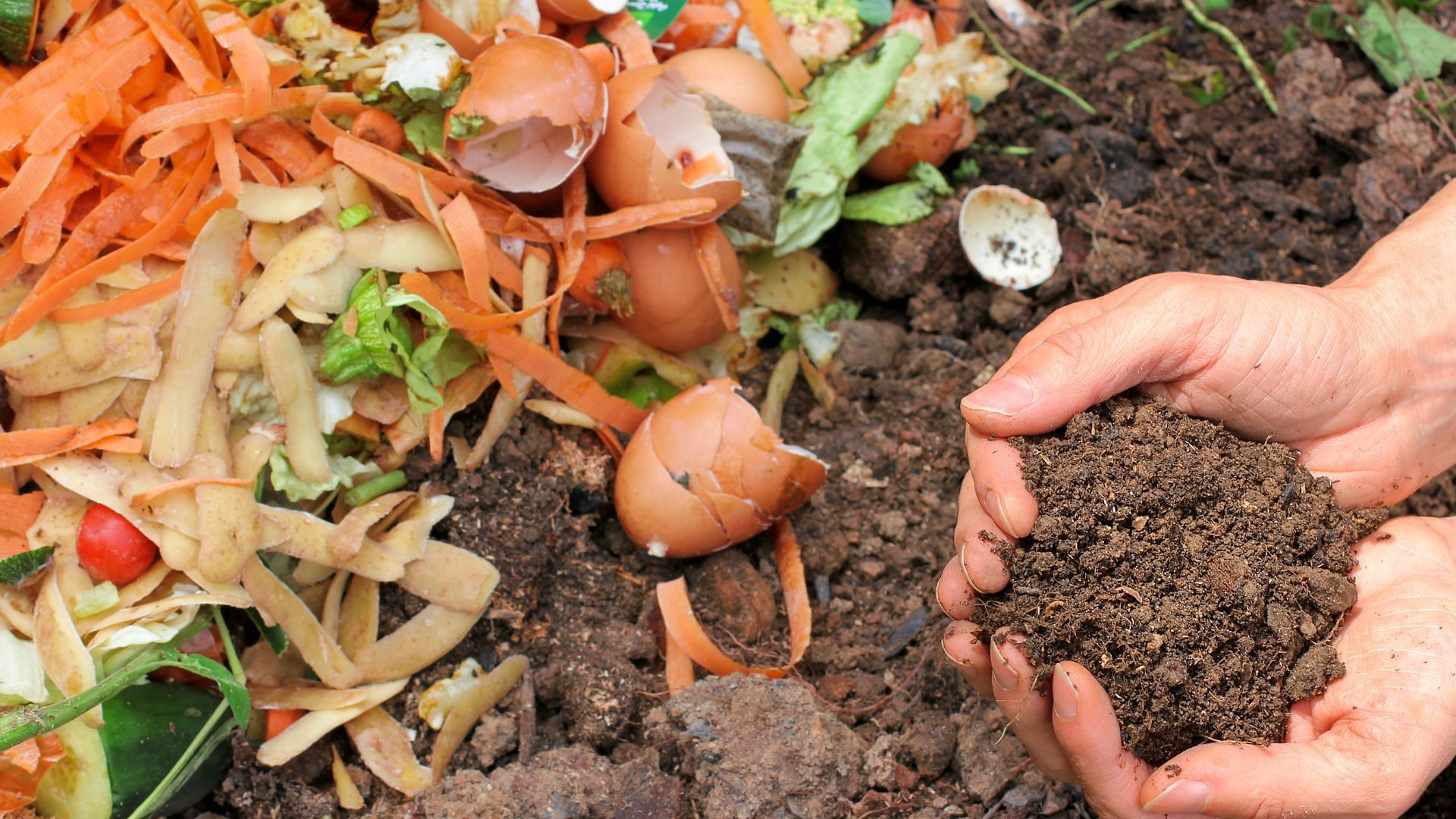
Making Your Own Cannabis Potting Mix
Share
Have you ever wanted to blend your potting mix? Doing this is a fun and affordable alternative to buying bagged mixes. When you compare the cost of your favorite brands to making them yourself, you will realize how much money you can save.
Not only is it affordable, but you can put in higher quality ingredients that your plants and microbes will love. The base of this recipe comes from Cornell University, with the addition of a few of our favorite ingredients.
The basic recipe is based on volume and is as follows:
- 1/3 Peat Moss, Coco Coir*, or Leaf Mold*
- 1/3 Rice Hulls*, Pumice, Vermiculite, or Perlite
- 1/3 Compost
- Dry Amendment Fertilizers
- 5-10% Biochar
In this mix, we have equal parts of each ingredient, with an additional 5-10% of the total volume comprising biochar.
The first ingredients listed provide the same benefits to your soil mix. They retain water, add organic matter, are lightweight, and allow your plant's roots to grow within them quickly. Depending on your resources and ethical values, you may choose one over the other.
Peat Moss, Coco Coir, Or Leaf Mold

Peat moss is a dark brown fibrous material used in many bagged mixes because it holds water well and is lightweight. It comprises ancient decaying organic matter, like sphagnum moss, found throughout wetlands. Peat moss takes hundreds of years to form and therefore is not sustainable.
We have an unsustainable product if we harvest more peat moss than can be replaced. Canada regulates their peat moss harvest annually to avoid complete depletion. Another consideration to make when deciding if peat moss is for you is its pH. It is highly acidic, with an average pH of 3-4.5.
Cannabis prefers slightly acidic soil around a pH of 6.0. Remember, pH is calculated on a logarithmic scale. This means that every change in level multiplies by ten rather than a single increase as expressed in a linear scale. After blending and amending, you can determine your potting mix's pH with a slurry test.
Alternatively, you can replace all the peat moss with coco coir, a byproduct of the coconut industry that may be more environmentally friendly. Although, the carbon footprint acquired from shipping across the globe isn't environmentally friendly either.
You can buy coco coir either compressed in a brick or loose in a bag. Make sure it is pre-rinsed, as it can be high in sodium. Besides being salty, it is not as acidic as peat moss, with an average pH of 5.5.
The most sustainable option is leaf mold or decaying leaf litter produced at home. Instead of bagging your leaves and throwing them in the green waste bin, you can save them and age them in a pile for two years. It is like compost but much lighter because it is composed entirely of leaves. Of course, waiting two years is quite a lengthy time. But as we have said before, regenerative agriculture is about endurance, not instant gratification.
Rice Hulls, Pumice, Vermiculite, Perlite

Rice Hulls, Pumice, Vermiculite, and Perlite provide your potting mix with aeration and retain water that will slowly release nutrients.
Rice hulls are the most sustainable option because they are the most affordable and, like coco coir, are a byproduct of the rice industry. They contain 90% silicon, an essential element for plant health that many potting mixes lack. They slowly decay, but it takes years before you need to replace them.
Pumice is a vesicular lava rock filled with holes from gases that were present when it exploded from the earth's crust during volcanic activity. These holes allow water to penetrate and nutrient storage.
Vermiculite is another type of rock that expands when heated. It has impressive water storing capacity and is lightweight. Unfortunately, it can be a more expensive option because of the processing it goes through.
Perlite is another volcanic rock that expands when heated. It does not promote water retention but creates more drainage and is very lightweight. It tends to float to the top of your mix after time and will blow away if outside; therefore, is not our favorite choice. Although, it is widely available and inexpensive, making it a popular choice.
Compost
Compost is an essential part of your potting mix; it is where the microbes are decomposing organic matter. Using a combination of traditional compost and vermicompost is an excellent choice. The more variety you use in your mix, the more food sources your plants and microbes will have; variety is vital to biodiversity and a thriving ecosystem.

Making your own compost is always recommended. If you still need to start composting, there’s no better day than today! Worm bins are easy to make, and their castings create fantastic compost. You only need a bucket with small ¼ inch or ½-centimeter holes for drainage, moist newspaper strips for bedding, worms, and food scraps. You can keep your worm bin under your kitchen sink and harvest castings in as little as least two months.
In the meantime, your next best option is buying premium bagged compost like BioVast Vermicompost. It is 100% organic and full of a balanced ratio of beneficial biology.
Besides vermicompost, you can make thermophilic compost, static compost, or bokashi compost.
Thermophilic or hot composting is compost that has been decomposed by thermophilic bacteria, meaning bacteria that thrive in high temperatures. Hence the name, hot compost; bacteria create immense heat with the energy they use to decompose the organic matter. Temperatures in these piles can reach 200F or 93C, but the ideal temperature is 175F for at least three days. The high temperatures kill seeds, pests, and pathogens, making hot compost an excellent choice.
You can produce hot compost in various ways to suit your lifestyle and composting needs best. Different methods include open-air piles that are as simple as piles of proportionate Carbon and nitrogen materials that are watered and turned once every 7-10 days.
One of the most critical factors of thermophilic composting is starting with the correct ratio of Carbon (brown) to Nitrogen (green). This is typically represented as 30:1 and can be accurately obtained by starting with equal volumes of brown and green materials.
Many composting systems exist, but home-built systems are easy to make with recycled materials. You can build them with cinder blocks, wood pallets, or other discarded items. The key is to ensure your pile is at least 3 feet or 1 meter tall and wide. So if you are building a bin, ensure it meets those dimensions at a minimum.
Static or traditional compost leaves your organic matter to decay in a pile for an extended period. This process can take over a year. You can speed up this process by building a Johnson Su bioreactor. You connect panelled wire fencing into 3 foot or 1-meter diameter circle on top of a wooden pallet and place a perforated corrugated tube down the centre. Fill with organic matter and keep moist. The perforated pipe incorporates oxygen that speeds up the decomposition of the organic matter.
For fast composting without turning, you should try bokashi composting, which utilizes anaerobic bacteria in a sealed container to ferment food waste into compost in as little as four weeks. Bokashi is grain inoculated with lactic acid bacteria like this bierkashi, made from recycled organic spent brewer’s grains.
Compost contains organic matter and nutrients, but most compost doesn't have enough nutrients for cannabis to thrive. You will need to amend your potting mix with dry amendments for fertilizer.
Dry Amendment Fertilizers
Depending on your fertilizer preferences and available resources, you can create a custom fertilizer blend that your plants and microbes will love. You can use animal byproducts or manures. Or go vegan and use plant and mineral-based fertilizers. Whatever you choose, you want to ensure your plants have the 18 essential minerals they require to thrive.

The basic nutrients are Carbon, Hydrogen, and Oxygen, and the primary macronutrients are Nitrogen, Phosphorus, and Potassium. The basic plant nutrients are available through air, soil, and water. And the primary macronutrients are the ones most focused on in traditional fertilizer applications, N-P-K.
The secondary macronutrients are Calcium, Magnesium, and Sulphur. And the micronutrients are Iron, Manganese, Zinc, Copper, Boron, Molybdenum, and Chlorine. They are all essential for successful plant growth but in lower quantities than the primary macronutrients.
And the other elements that are not widely considered essential components of plant nutrition are Silicon and Cobalt. Silicon is influential in plant growth because it increases the growth of cells and strengthens their walls. While cobalt increases enzyme function, drought resistance, and alkaloid accumulation in medicinal plants, it even contains antifungal properties.
No matter what fertilizer you use, add these minerals to your potting mix to ensure optimal plant health.
Many folks are concerned with heavy metals that can sometimes build up in organic amendments. Luckily the humic acid in compost combined with biochar does an excellent job of passivating or tying up heavy metals, so your plant doesn't take them up. That's one reason we recommend adding biochar to your organic potting mixes.
Biochar
The final addition to your homemade potting mix is biochar. This ingredient is a Carbon rich porous material that contains up to 50% of the source carbon. Compared to compost which retains 10-20% of the source carbon. Biochar is an excellent way to sequester Carbon for long-term storage within our soils.
It can last thousands of years and reduces carbon dioxide emissions by 12% annually. Its porous structure makes a perfect home for microorganisms and stores water and nutrients efficiently.
Biochar is a porous material and therefore retains water, improving your available plant water content and reducing runoff.
Biochar also improves microbial populations by providing shelter, enhancing soil properties, and supplying nutrients. Because of the porous nature of biochar, it acts as a shelter for microbes. Studies have shown that certain types of fungi can evade predation by living within biochar. Specific soil properties like increased enzyme activity are associated with biochar and change microbial activity and community structure.
In the same way that biochar retains water, it also contains nutrients that bind to water (anions), providing nutrients accessible to microbes.
Nutrient retention is as simple as reducing runoff by holding onto water that has nutrients within it. Certain nutrients are considered mobile and are often responsible for environmental degradation known as eutrophication, primarily associated with Nitrogen and phosphorous. These two nutrients are often the most over-applied in every agricultural setting. Whenever there is water runoff in the presence of these nutrients, the positive hydrogen molecules in water bind with the negative Nitrogen and phosphorus molecules, allowing them to move out of your soil into waterways. With the addition of biochar, you are improving your nutrient retention capabilities. Not only does biochar retain these anions, but it also improves the cation exchange capacity.
Biochar may increase the cation exchange capacity of your soil by providing more cation exchange sites. The cation exchange capacity of soil is the ability of cations to exchange with plants. Essential plant cations are Potassium, Magnesium, Calcium, Ammonium, Iron, Molybdenum, Selenium, and Zinc. To access these nutrients, plants metabolize some of their carbohydrates to create carbonic acid. This results in a chemical reaction allowing the nutrients to diffuse into the root.
There are so many benefits to using biochar. It's no wonder the ancient Amazonian tribes used it over 2,000 years ago to turn lack-lustre soil into the fertile "Terra Pretta" in the Amazon jungle we know today. This ingredient is sure to improve your potting mix and plant health.
Combine Biochar, Compost, Rice Hulls, and Leaf Mold for a premium potting mix that costs a fraction of store-bought bagged mixes. Not only can you make many of these ingredients at home, but you can customize your fertilizer blend with ingredients you have locally or that are important to you.

